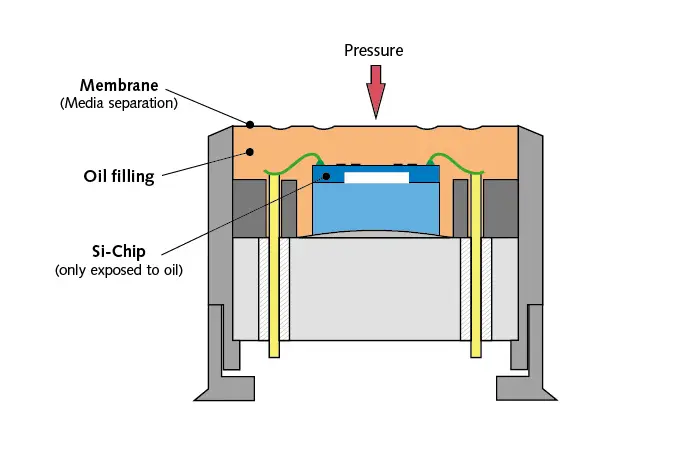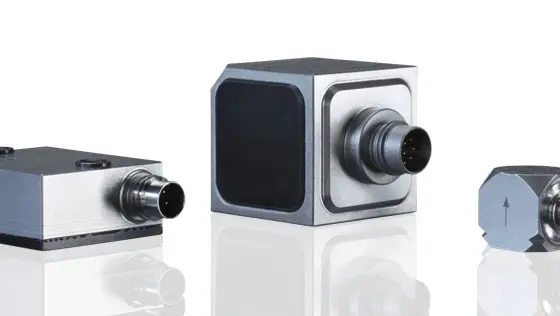What are piezoresistive pressure sensors used for?
Piezoresistive pressure sensors are largely drift-free and are therefore the first choice for the measurement of static pressures.
How does a piezoresistive pressure sensor work?
The pressure to be measured is sensed by the silicon chip via a membrane and incompressible silicone oil. The chip is supplied with power via an insulating glass feedthrough and bonding wires. The pressure signal output is in mV. The pressure signal is then temperature compensated and amplified to a corresponding V or mA output signal.
What types of piezoresistive pressure sensors do exist?
Piezoresistive pressure sensors measure against different zero points (absolute relative to vacuum, relative to ambient pressure, and differential to another pressure), depending on the type of sensor. Depending on the application, absolute, relative (gage) or differential pressure sensors may be suitable. The following overview shows the different configurations of the corresponding pressure sensor type.




